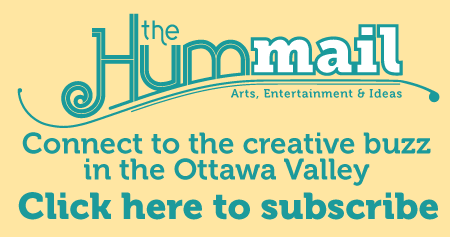Diana Beresford-Kroeger - Merrickville ON
Listing Contact:
Website
Location:
Merrickville ON
Merrickville-based author Beresford-Kroeger is a world recognized author and scientist. She has a unique combination of western scientific knowledge and the traditional concepts of the ancient world. Her Bioplan is an ambitious plan encouraging ordinary people to develop a new relationship with nature, to join together to replant the global forest. Her books include “The Sweetness of a Simple Life”, “The Global Forest”, “Arboretum Borealis”, “Arboretum America”, and “A Garden for Life”.
Profile by theHumm
Date Published: Tue, 01 Apr 2014
A Renegade Scientist and Forest Heroine for Our Times
Every breath we take is because of a tree’s ability to create oxygen. No other organism or invention can do what the tree does. Trees are entirely unique in our galaxy, quite possibly the universe — so with every breath you take, thank a tree… then plant trees and fix your forests. — Diana Beresford-Kroeger

Every once in a while I pay a visit to a big, twisted white oak on the top of a hill near my house. The tree is one of the largest on the land I have come to occupy. It is a scraggly mess of thick branches that sweep out horizontally from a vast crusty trunk. How it survived the onslaught of settlers, and the accompanying twin abuses of timber extraction and animal pasturing over the last century, remains a mystery. But I am grateful it did. This tree has a palpable presence, solidity and wisdom that come with age and survival. I have adopted this oak as my tree “elder”. Or perhaps it is the other way around, and the tree has taken me under its limb. I visit “my” oak when I need to regroup and ground myself. On occasion I will simply go and sit in the comfortable bend of one of its lower limbs and take in the view of its surrounding kingdom. And it does feel like it presides over the small valley and beaver pond below, and the slopes beyond. To some this may sound a bit “woo-woo”, but as anyone who has spent time with big trees will know, they have an incredible and inarguable energetic presence.
A woman in our midst also holds similar powers. Diana Beresford-Kroeger will be a familiar name to many who take an interest in trees and forests. Her book Arboretum America: a Philosophy of the Forest (2003) is one of the only books on trees I know of that takes an integrated approach to describing the culture (in all manners of speaking) of trees within North American forests. Her approach weaves together an unusual and rich tapestry of scientific and traditional knowledge with an insightful reverence. Bringing light to the oft-unseen and undervalued roles that trees play in the complex web of ecological relationships is Beresford-Kroeger’s specialty. Talking to her, like reading her books, is like being fed nuggets that spur one’s curiosity, intuition and observational powers. She helps us to reorient ourselves rightly and firmly within complex local and global ecosystems.
Diana has an agenda that might intimidate even the most ambitious amongst us. She wants to reach a mere billion people around the globe to tell them about the importance of preserving our global forests and about the myriad reasons (as yet largely unrecognized) why the current course of flattening forests for pulp wood and suburban developments could truly be cause for a diagnosis of collective insanity. In Canada, 50% of our boreal forests — part of the last great forest system left in the world — is on the chopping block, and few people know about it. Fewer still know why this should matter. Aside from the more common arguments as to why these forests should stay standing — habitat, emotional and cultural value, carbon sequestering and oxygen-producing abilities — Diana can point out more than a few more profound reasons why they should remain. To start with, many feet of uncomposted leaf litter will quickly decompose with the removal of the protective forest canopy, resulting in the release of enormous amounts of CO2 into the atmosphere. These forests also produce healing antifungal and antiviral aerosols that have a purifying effect, on a very grand scale, on the air we breathe. And who knew the role that fulvic acid from leaves plays in chelating (bonding with) iron in the soil? This chelated iron then trickles by way of rain and streams down to the oceans far away, providing essential nutrients to the ocean’s living systems. This is simply the tip of the proverbial iceberg. The forests are vital to the health of our planet, and indeed, to our own health.
Somehow, despite the shameful record governments have displayed in (not) protecting the forests, Diana remains hopeful that, if we arm ourselves with knowledge and some ambition, things can turn around. According to her calculations, if each of us inhabiting the planet planted 6 trees, we would regenerate our forests. So for those of you for whom that is easy, take it upon yourselves to plant several times that number, to make up for those who can’t. Encourage everyone you know to do the same. (See the side bar for species she suggests for our area).
The seeming endless barrage of negative, if not calamitous, information coming at us often has a crushing effect on my spirit. So finding guidance and solace amongst the mayhem is becoming ever more important in my life. Diana’s latest book, The Sweetness of a Simple Life, is a precious collection of short essays on how to lead a happy, healthy life by drawing from the bounty that nature offers and a maintaining a profound reverence for it. The book has become a comforting bedtime dose of practical wisdom and intriguing and accessible science-based explanation, as well as an entry point for further reflection. As with any of her books, I highly recommend it.
Diana and her husband Christian Kroeger live on a property near Merrickville with a simplicity and humility that belies the riches of experience they have both had. Diana descends from a lineage of ancient Irish scholars who once advised kings. Orphaned as a child, Diana was taken under the care of a Brehon wardship that tutored her in the Druidic tradition and in the natural connections between the arts and sciences. As the last of her lineage, she was told she would be needed to bring this knowledge to the new world, and with passion and conviction she is doing just this. These early teachings have informed the unique way she marries her extensive science background (ethnobotany, medical biochemistry, organic and nuclear chemistry) with traditional Irish and Aboriginal wisdom. Developing sensitivity and a holistic approach to understanding the “invisible” and subtle phenomena within the natural world is critical to our future. Similarly, cultivating personal rituals of silence, meditation and reflection, and valuing the potent roles that art, poetry and dreams can play in healing our collective and individual psyches are, in her opinion, essential ingredients to regenerating a healthy culture.
I urge you to delve more deeply into Diana’s work, research and philosophy. They are likely to transform the way you experience a forest and even your life. There will be links posted on theHumm’s website <thehumm.com>, and you can also follow her blog for news about the upcoming feature documentary now in production at <dianasjourney.com>. Diana will also be speaking and signing books on May 7 at the Portland Horticultural Society (contact Madeleine at 273–8707), on May 12 at 7pm at The Branch in Kemptville (contact Doug at 258–4044), and on a date to be determined in Brockville (contact Hugh at 345–2712).
Most of all, resolve to get out into the wild for some “forest bathing”! Forest bathing has been around for more than a thousand years, but has recently been officially recognized in Japan as being significantly beneficial to human health. So make a point to spend time walking slowly through the forest. Listen to what the trees and other creatures have to say. Observe what is encompassing you. Breathe deeply and just be for a while. You may be amazed at how profoundly healing for the body and soul the experience is. In Diana’s words, “the path of the forest is the path to peace.”
Humm Profile by Susie Osler
What to Plant?
Bur oak (Quercus Macrocarpa): reduces pollution by about 25% around it. It is known as an anti-famine tree due to the large numbers of acorns that were harvested and eaten by aboriginal people.
Eastern White Cedar (Thuja Occidentalis): Deer and sheep can survive on it in winter. Radiant heat increases the temperature by about one degree around it, providing a warmer shelter for birds to cluster in; Thujone aerosol in summer is antiviral and helps boost the immune system.
American Basswood (Tilia Americana): Produces more nectar that feeds beneficial insects (i.e. pollinators) than any tree on the planet.
Standard (ungrafted) Apple: For eating. Skin of the apple aids digestion and helps the large intestine.
Bitternut and Shagbark Hickory (Carya Cordiformis or Ovata): Cordiformus can be a source of nut oil and Ovata produces nuts for nut cream and milk. Another super-effective carbon-dioxide-absorbing tree, and a valuable timber tree.
Jul 1 Canada Day
Jul 1 Canada Day
Jul 8 Storytime with Heidi at the Maberly Hall
Jul 8 Storytime with Heidi at the Maberly Hall
Jul 13 Community "Yart" Sale
Jul 13 Community "Yart" Sale
Jul 18 Multicultural Potluck
Jul 18 Multicultural Potluck
Jul 18 Multicultural Potluck
Jul 18 - 27 Bloomfest Garden Art Show & Sale
- Lorrie Potvin — Repurposed
- Stepping Out: A Tap-Dancing Triumph of Comedy and Heart
- Art in the Garden A Celebration of Art, Nature & Community
- The Savannah Sipping SocietySouthern Charm Comes to The Station Theatre
- Celebrating Solstice Together National Indigenous Peoples Day in Mississippi Mills
- Summer/Fall Pops Concerts For 2025
- Quilts on the Tay
- Mill Street Books Presents…
- Meet Artists at MERA
- Befriend a Beach!






